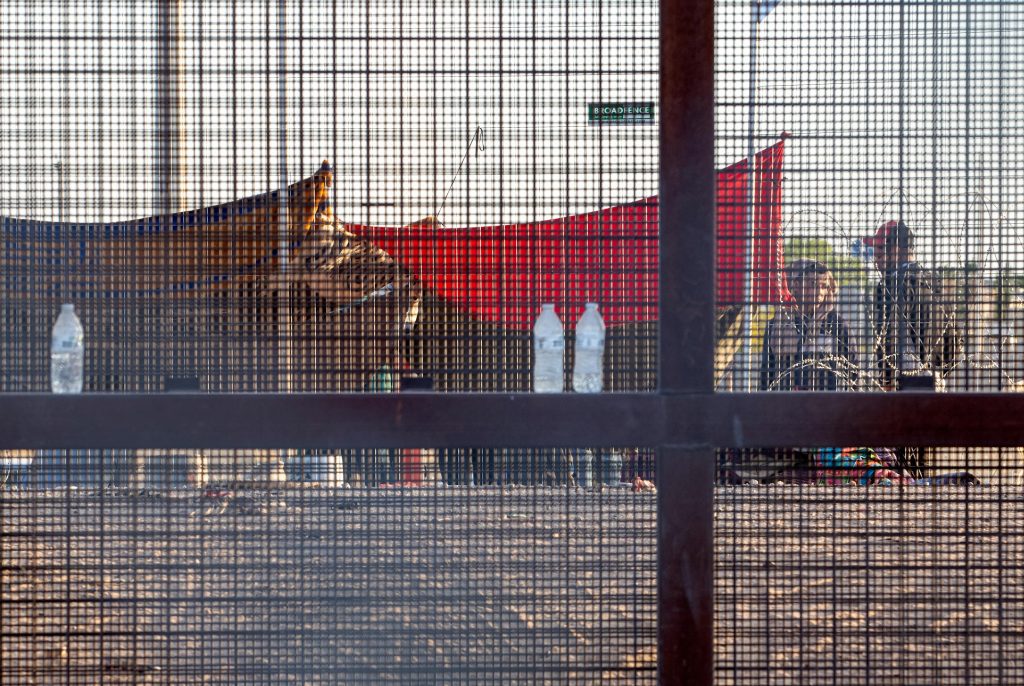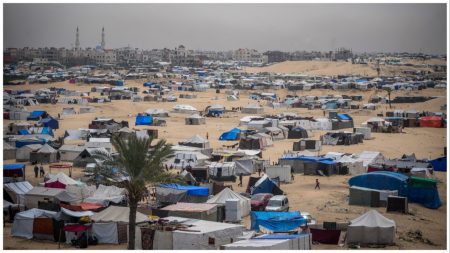By REBECCA SANTANA (Associated Press)
A judge has ruled that migrant children who wait in makeshift camps along the U.S.-Mexico border for the Border Patrol to process them are in the agency’s custody and are subject to a long-standing court-supervised agreement that set standards for their treatment.
The 1997 court settlement on how migrant children in U.S. government custody must be treated is important when determining if the children are officially in Border Patrol custody. These standards include a time limit on how long the children can be held and services such as toilets, sinks and temperature controls.
The Department of Homeland Security must quickly process the children and place them in facilities that are “safe and sanitary” following Wednesday’s ruling.
The border camps have become a point of contention between immigrant advocates and the federal government. The U.S. has claimed that smugglers send migrants to the camps and argued that the children are not yet in Border Patrol custody because they haven’t been arrested. Advocates assert the U.S. government has a responsibility for the children and that Border Patrol often directs migrants to the camps, sometimes even driving them there.
Children traveling alone must be turned over within 72 hours to the U.S. Health and Human Services Department. Asylum-seeking families are typically released in the U.S. while their cases wind through courts.
Neha Desai, senior director of immigration at the National Center for Youth Law, said in a statement that the ruling is a big win for children at open air detention sites, but it's unfortunate that a court had to direct the government to do what basic human decency and the law clearly require.
The Department of Homeland Security did not immediately respond to a request for comment.
U.S. District Judge Dolly Gee’s decision could have far-reaching implications due to the increasing number of families with children making journeys to the U.S. The changing situation places different stresses on federal agencies historically geared toward adults.
The legal challenge focuses on two areas in California: one between two border fences in San Diego and another in a remote mountainous region east of San Diego. Migrants who cross the border illegally wait under open skies or sometimes in tents or structures made of tree branches while short on food and water. When the number of migrants was particularly high last year, they waited for several days for Border Patrol agents to arrest and process them.
Gee mentioned that there is strong evidence suggesting that Customs and Border Protection, which includes Border Patrol, has physical control over minors at the outdoor locations. For example, CBP vehicles sometimes bring or leave migrants at the camps and previously handed out wristbands to organize migrants based on when they arrived.
The Justice Department stated in a hearing on March 29 that any agent who sends, or accompanies, migrants to the camps is considered equal to any law enforcement officer guiding increased traffic to prevent disorder and confusion.
The judge decided that the Customs and Border Protection’s juvenile coordinator must keep records on minors held by the agency for over 72 hours, including their time in the camps. The agency needs to ensure that the treatment of minors at open-air locations follows the 1997 agreement, according to Gee's statement.
Gee set a deadline of May 10 for the juvenile coordinator to submit an interim report on the number of minors held in open-air sites and how the agency was following the judge’s order.









